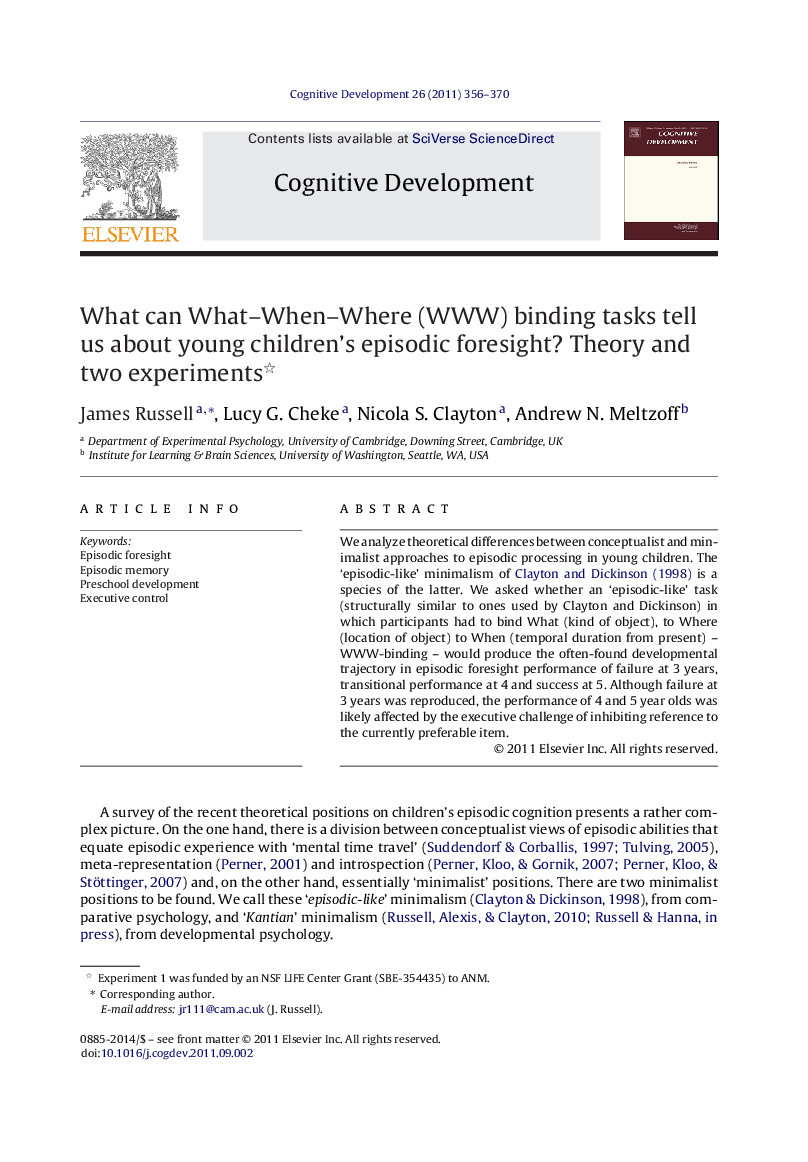| کد مقاله | کد نشریه | سال انتشار | مقاله انگلیسی | نسخه تمام متن |
|---|---|---|---|---|
| 916557 | 918864 | 2011 | 15 صفحه PDF | دانلود رایگان |

We analyze theoretical differences between conceptualist and minimalist approaches to episodic processing in young children. The ‘episodic-like’ minimalism of Clayton and Dickinson (1998) is a species of the latter. We asked whether an ‘episodic-like’ task (structurally similar to ones used by Clayton and Dickinson) in which participants had to bind What (kind of object), to Where (location of object) to When (temporal duration from present) – WWW-binding – would produce the often-found developmental trajectory in episodic foresight performance of failure at 3 years, transitional performance at 4 and success at 5. Although failure at 3 years was reproduced, the performance of 4 and 5 year olds was likely affected by the executive challenge of inhibiting reference to the currently preferable item.
Journal: Cognitive Development - Volume 26, Issue 4, October–December 2011, Pages 356–370